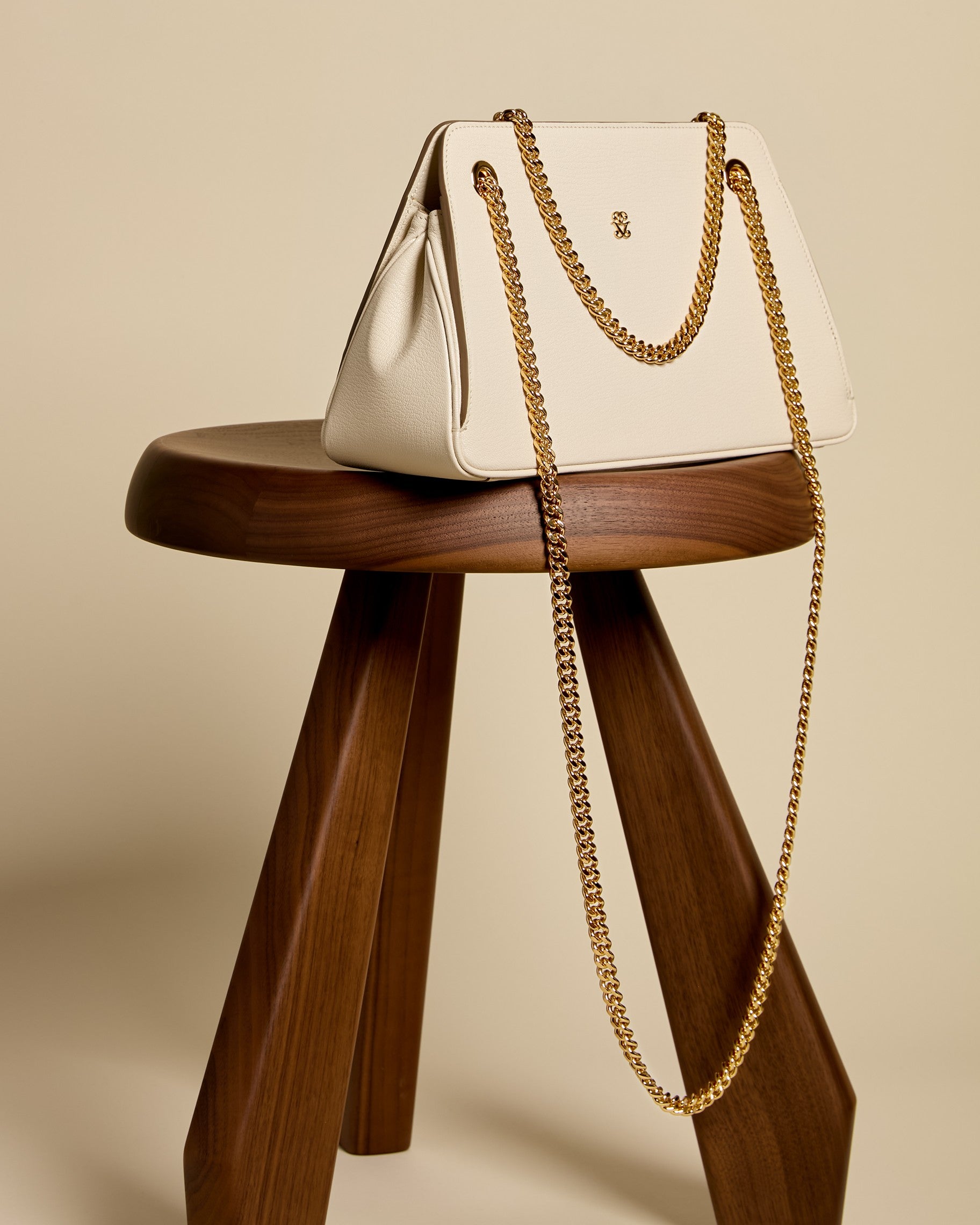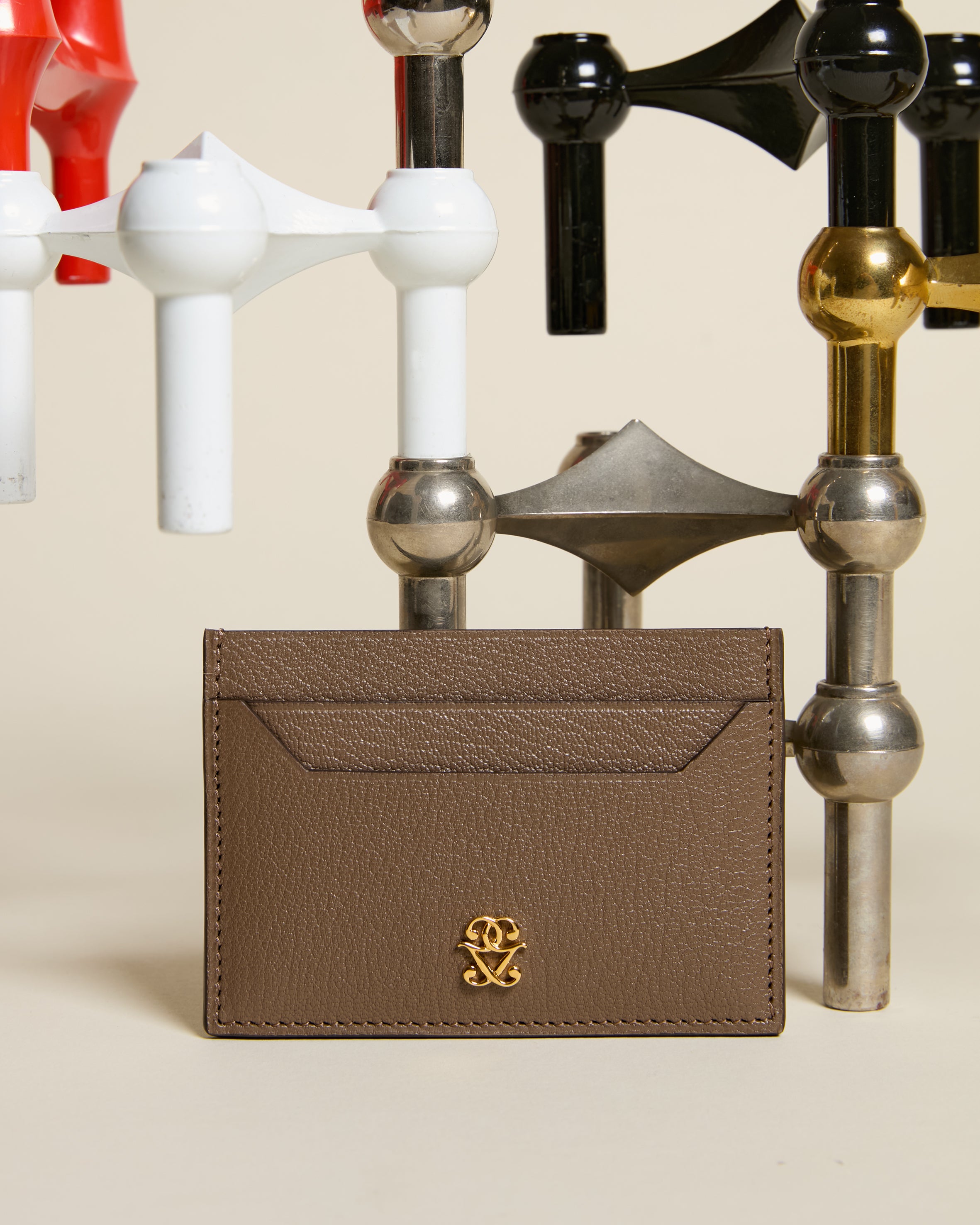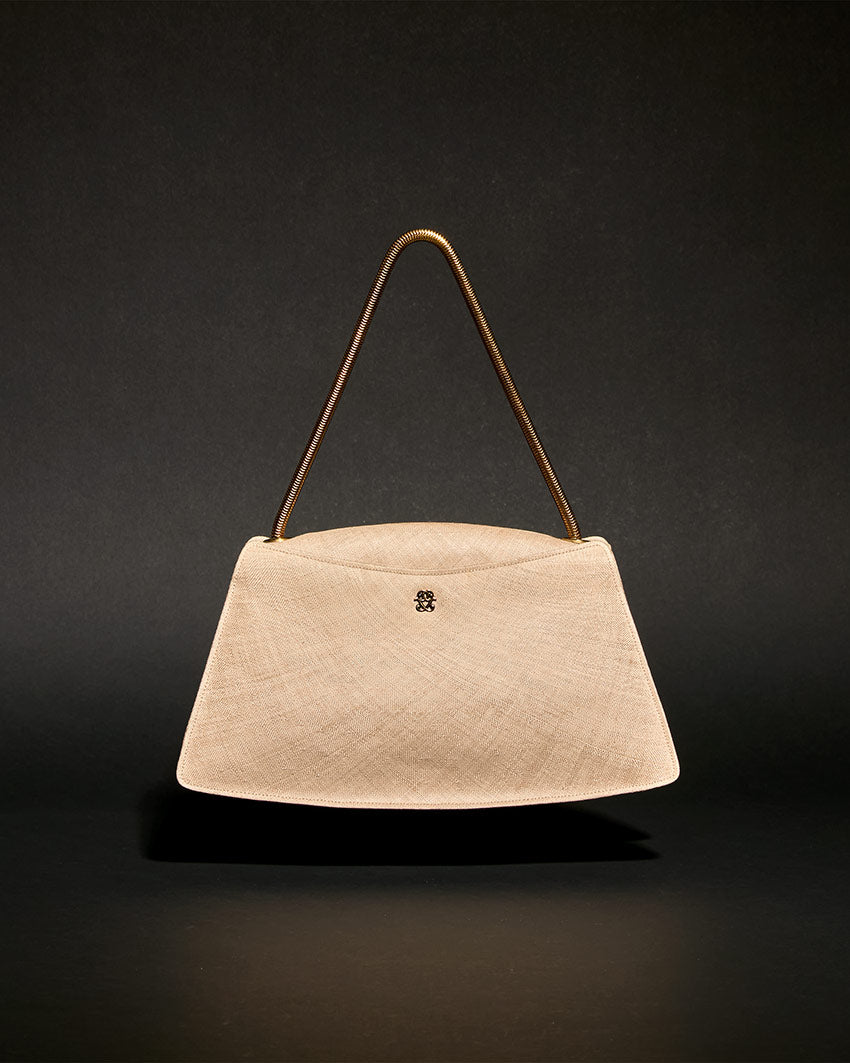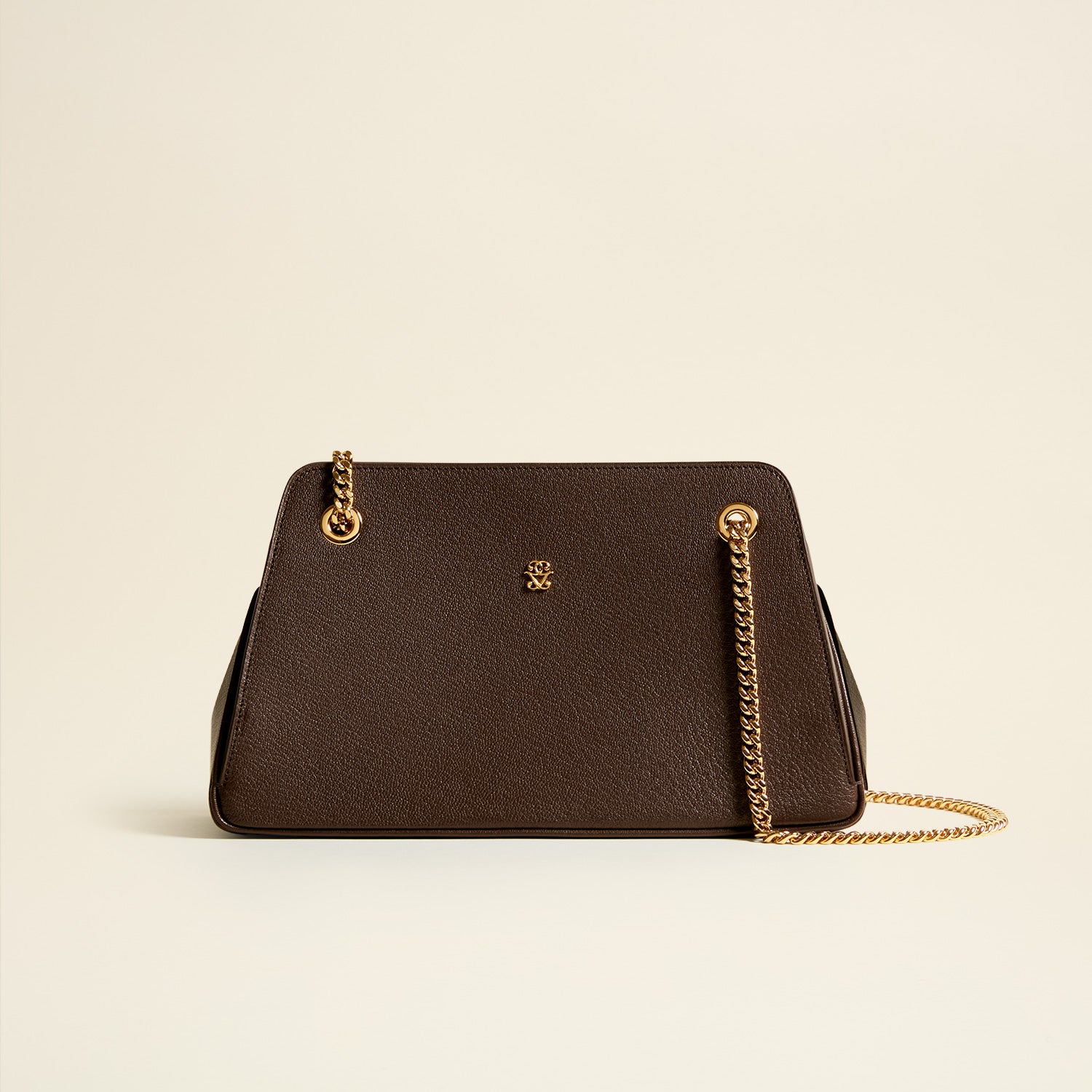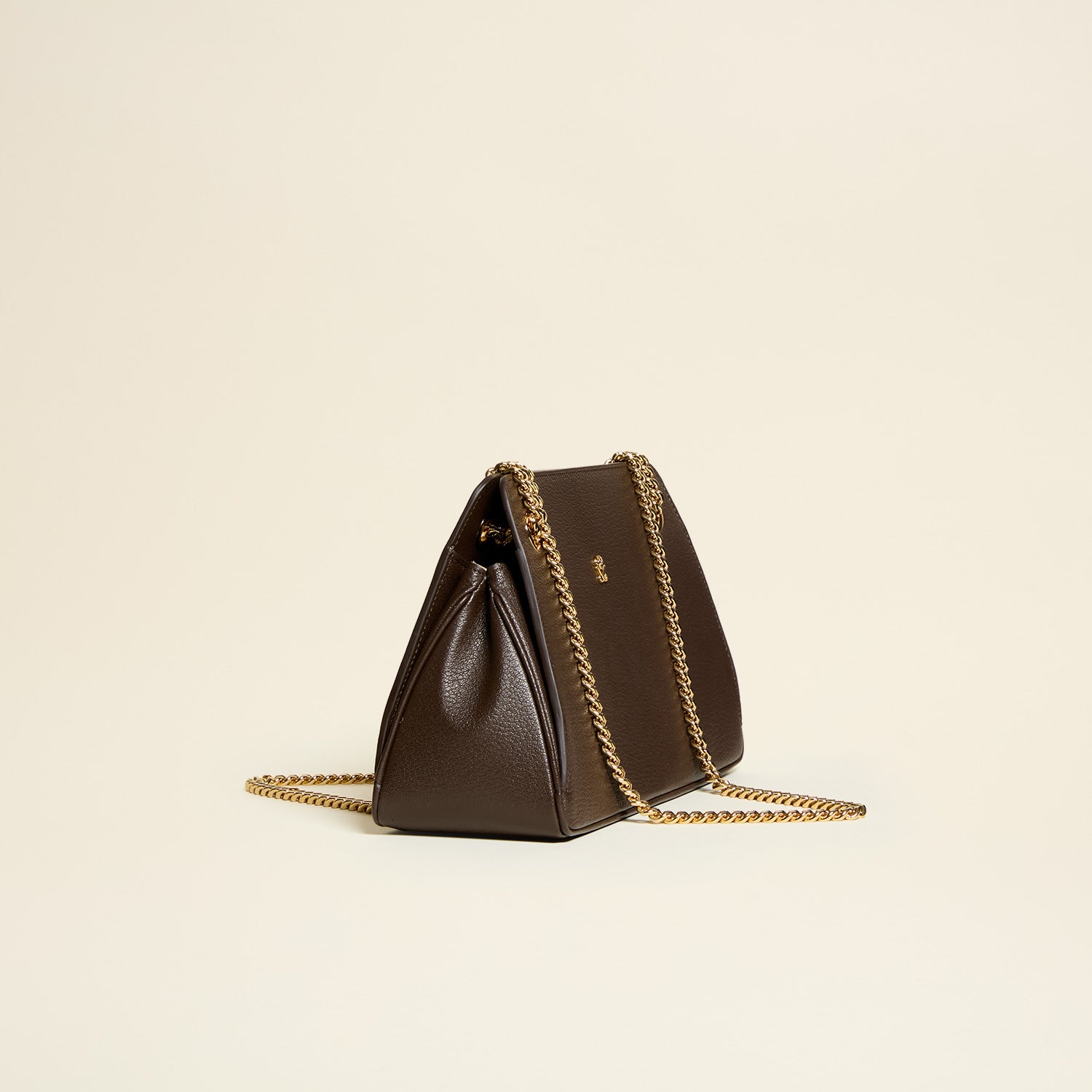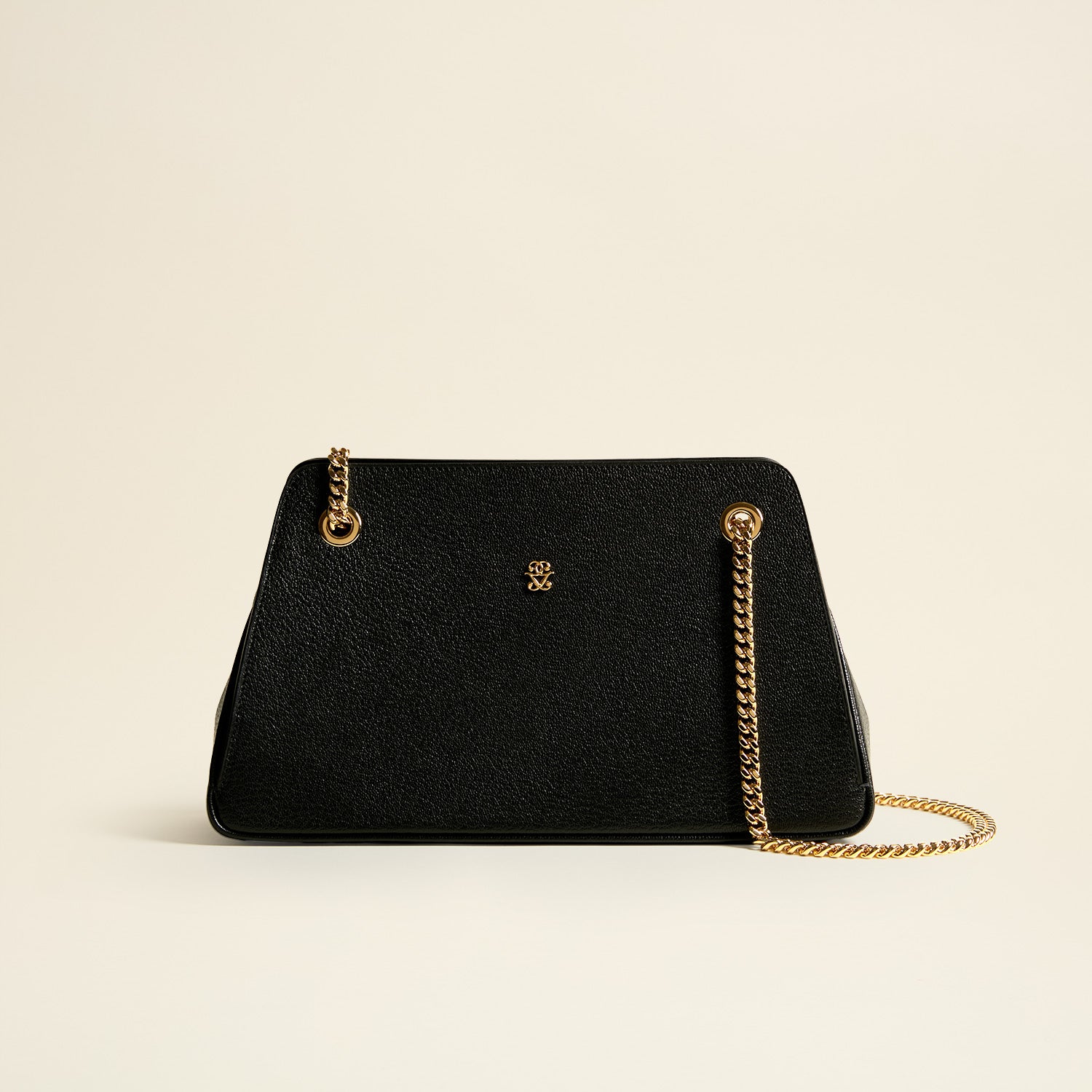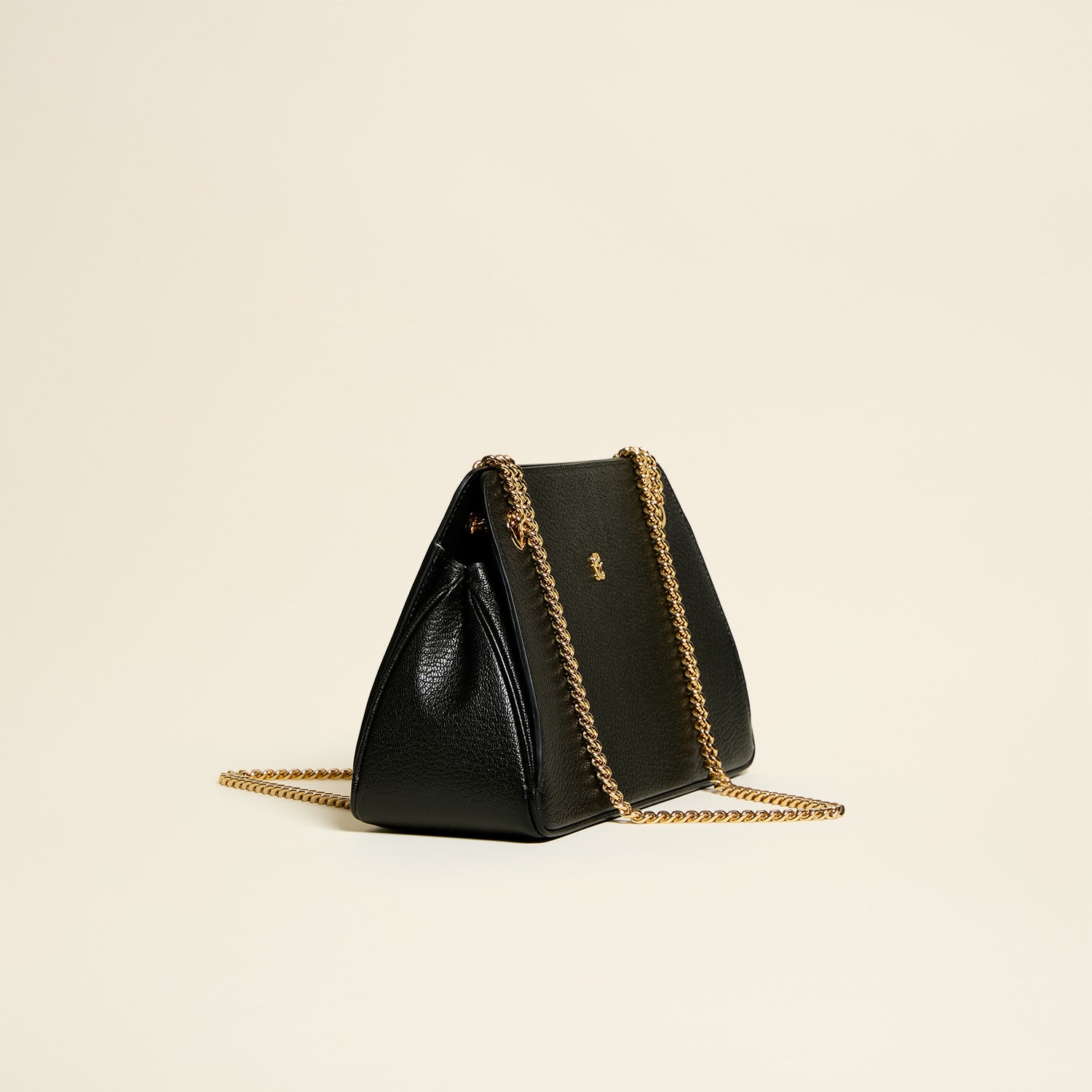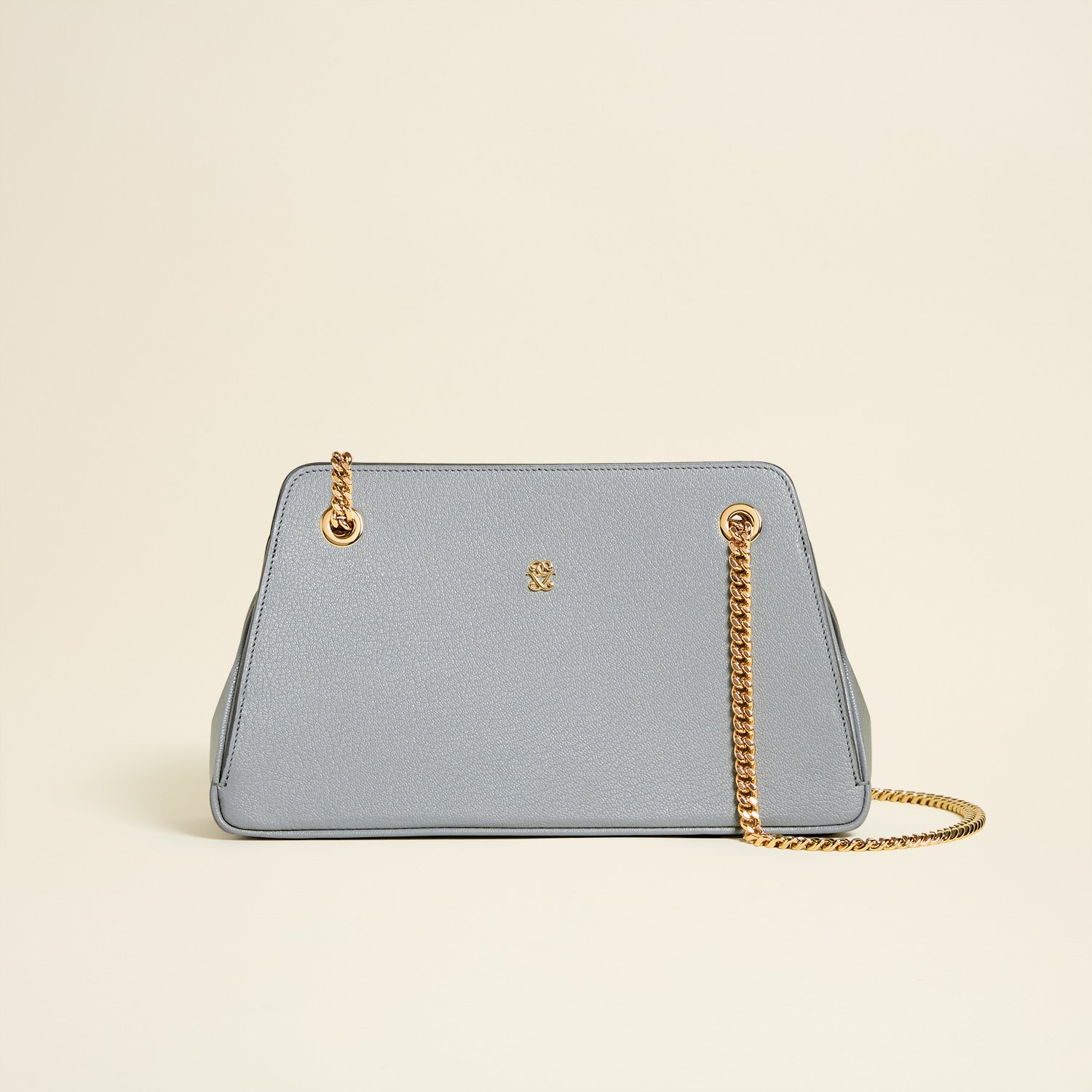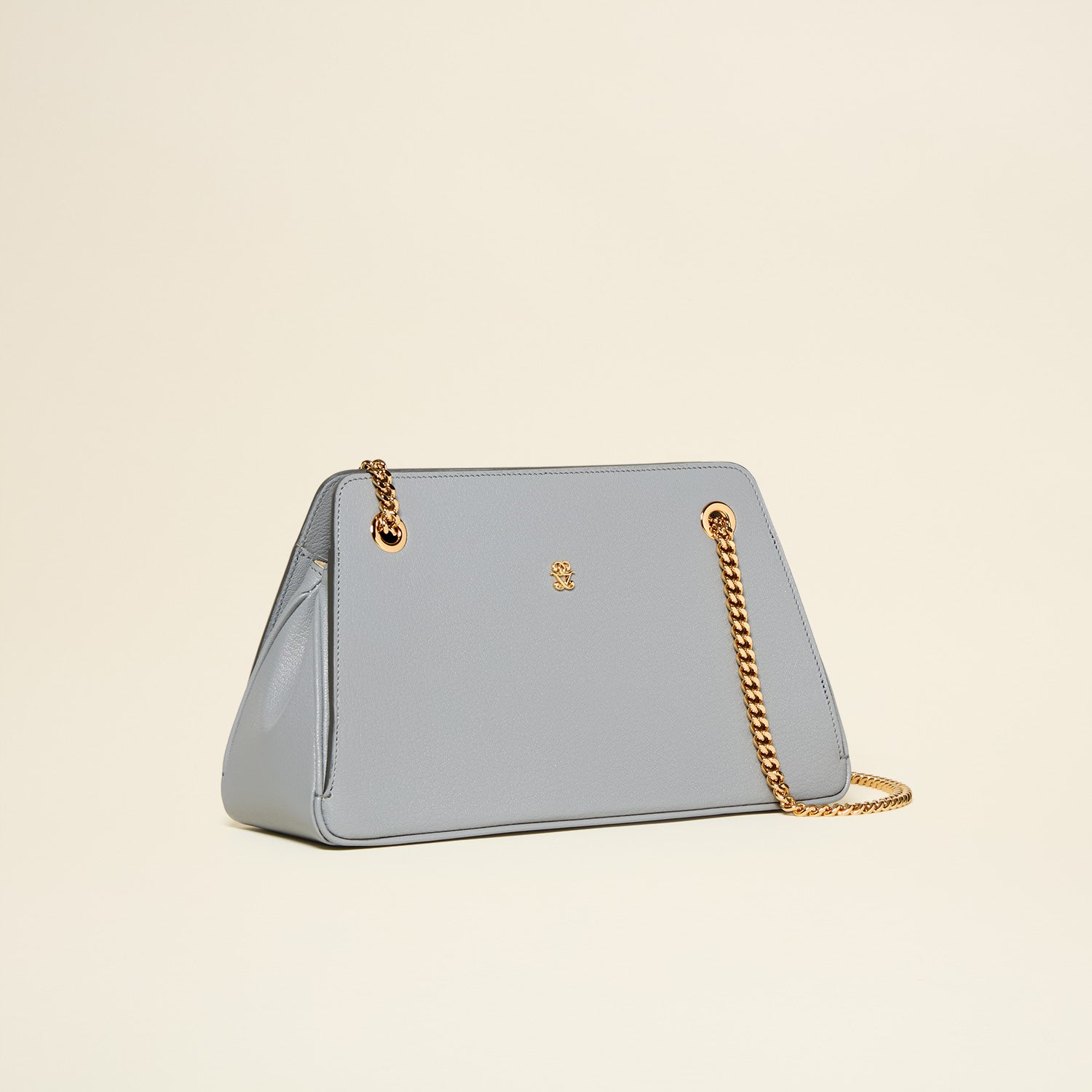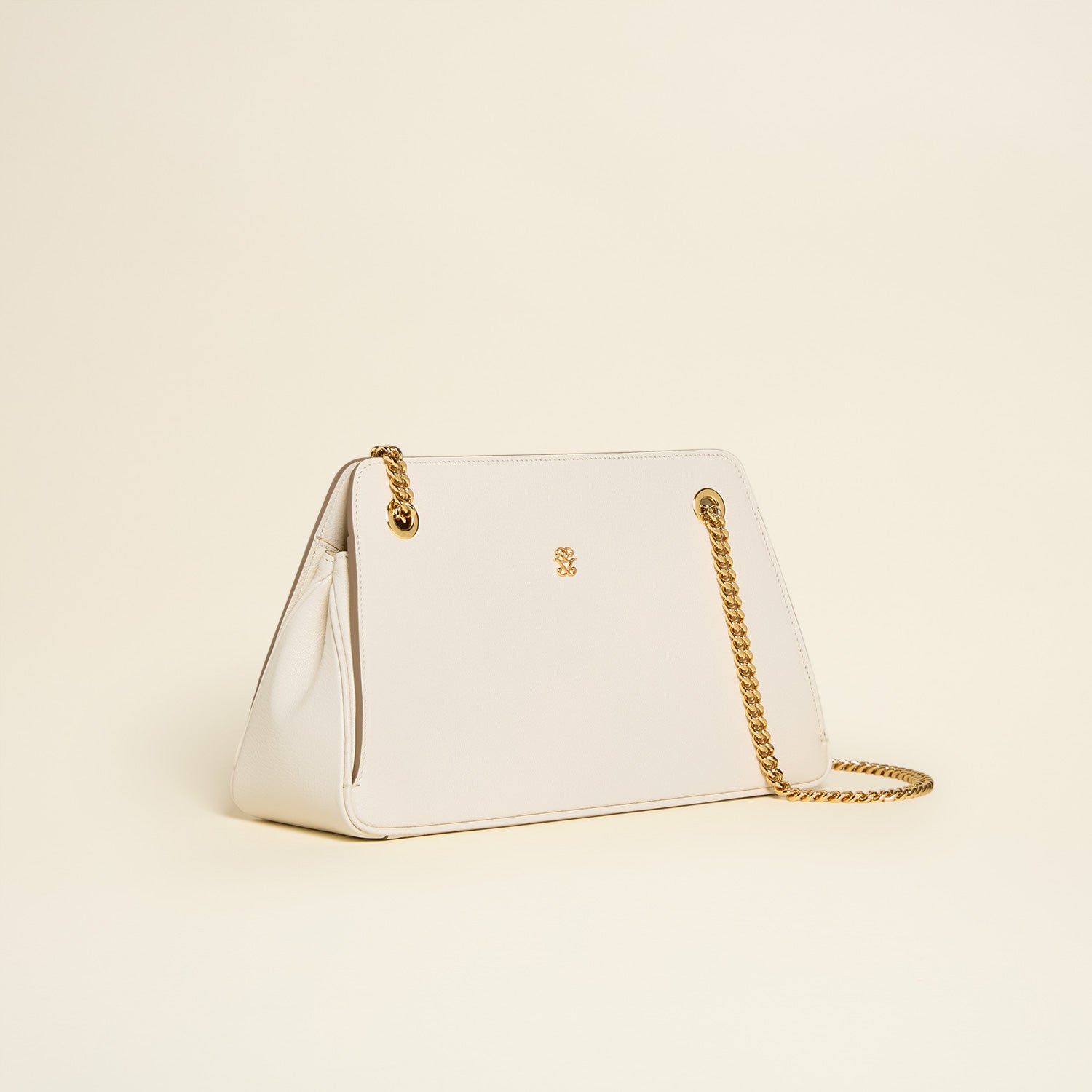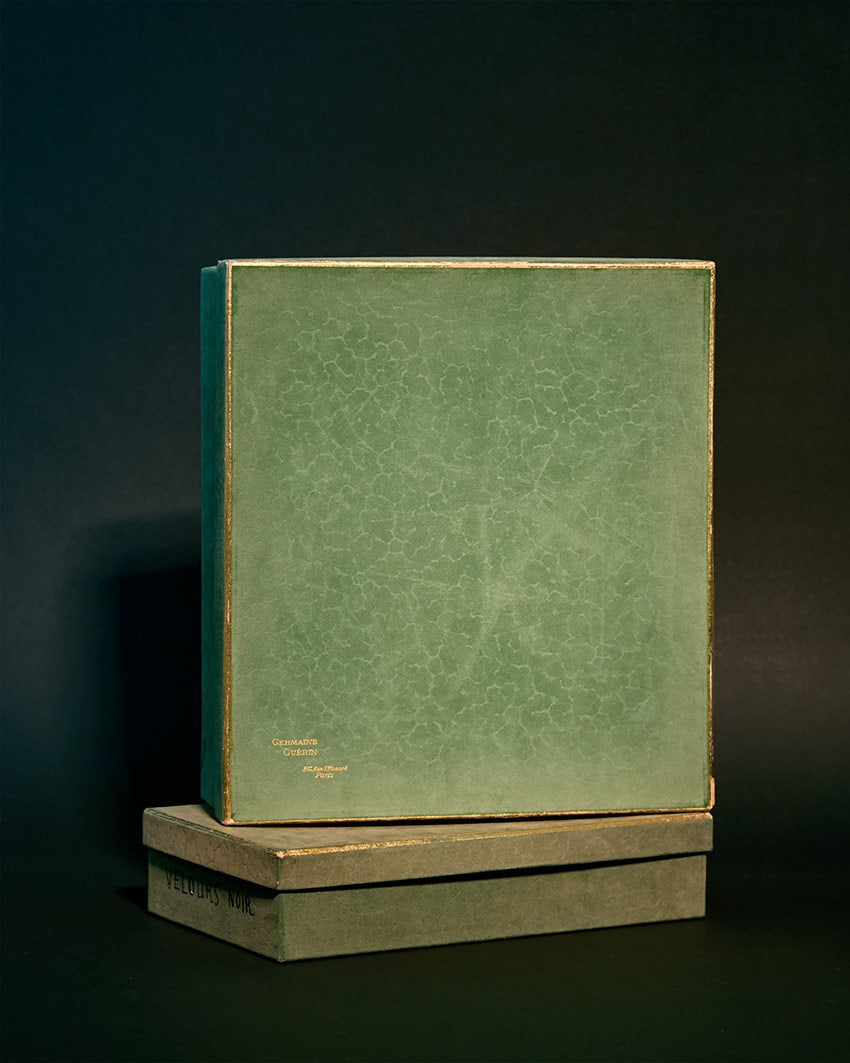The Lorette Bag
Reissue of one of Germaine Guérin’s most iconic models, the Lorette is a bag with a sleek, timeless silhouette and a compact size. It was designed to be the perfect companion for any occasion thanks to its versatile carrying options.
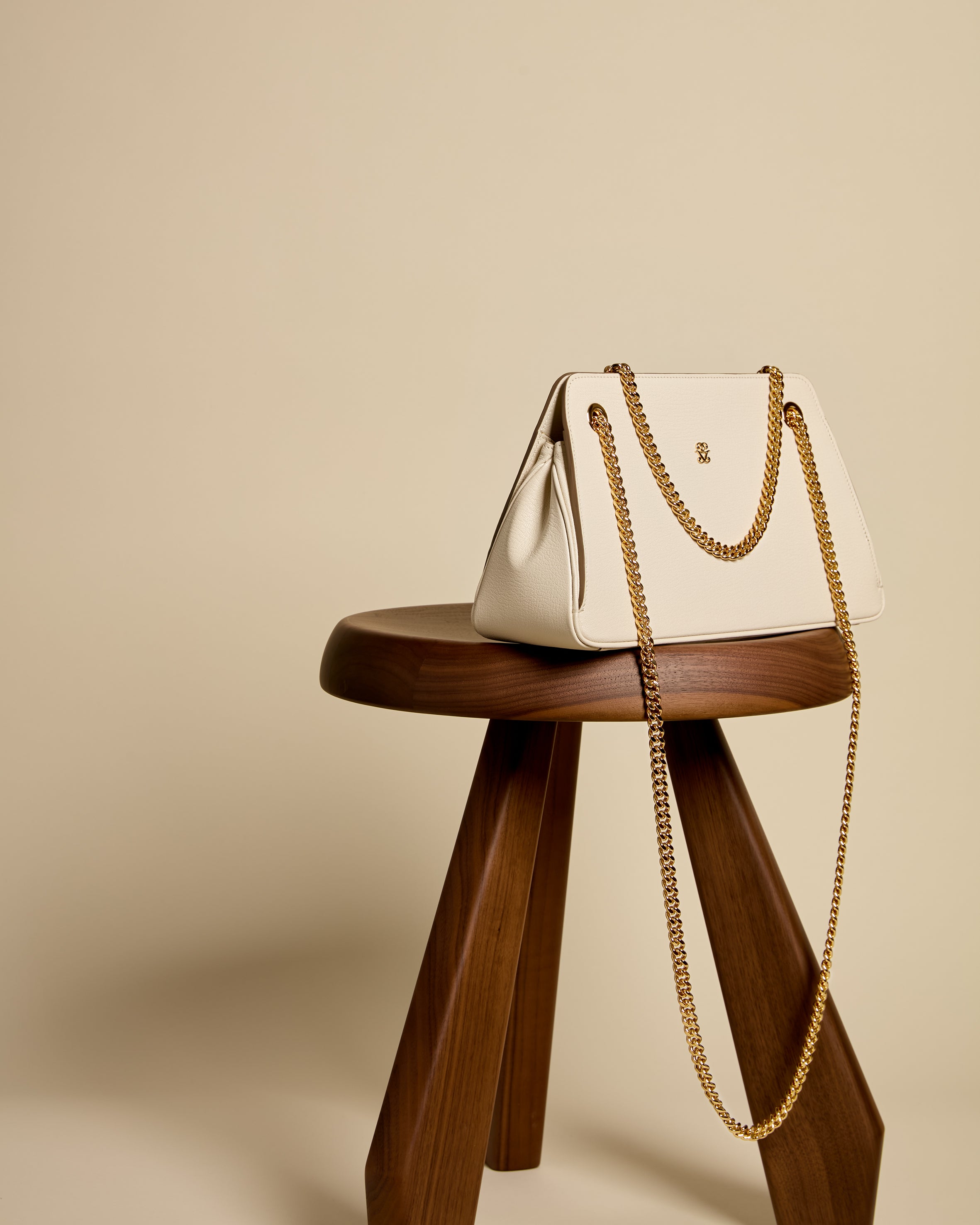
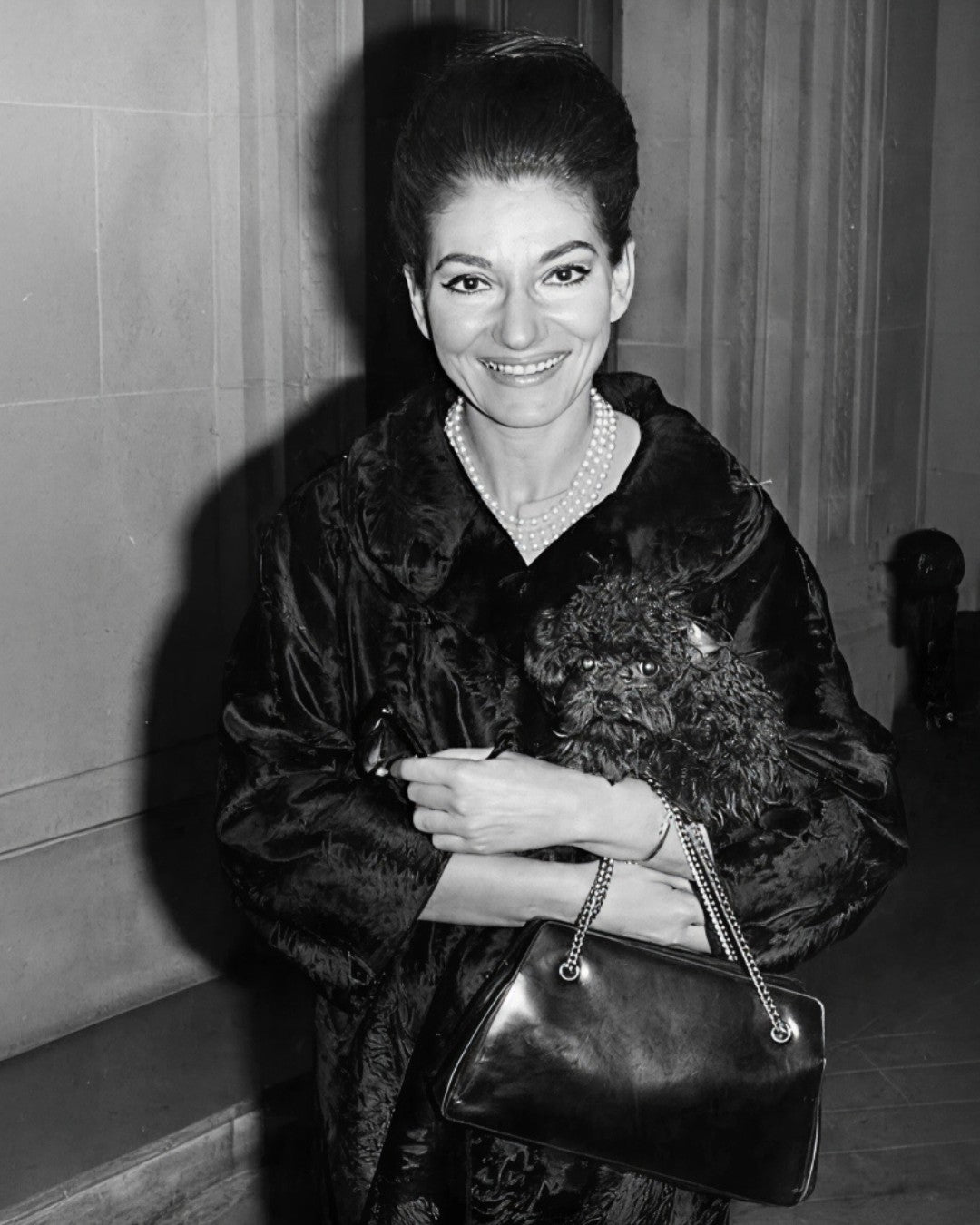
Maria Callas, Paris, 1967 © Cardenas/Sipa Press
A bag of legends
The Lorette bag was born amid the creative whirlwind of the 1950s.
It was carried by many women with extraordinary destinies, such as Maria Callas, the Maharani of Baroda, Claude Pompidou, H.S.H The Princess Grace of Monaco and Jackie Kennedy.
The reasons for its success? An apparent simplicity that conceals a complex construction, perfectly embodying the Parisian elegance dear to Germaine Guérin. The Lorette bag has remained true to the spirit of the Maison since 1921: carefully selected materials, meticulous attention to detail in the finishing, and that timeless harmony that transcends fashion without ever aging.

© Gavarni / BNF Gallica
Lorette?
This name is first and foremost a tribute to the 9th arrondissement of Paris, where Germaine Guérin grew up and lived all her life, and where the church of Notre-Dame-de-Lorette stands.
But Lorette is also a nod to a generation of bold and independent women, later known as cocottes or demi-mondaines.
In the mid-19th century, they settled in this newly built neighbourhood, taking advantage of modest rents in the grand townhouses whose plaster was still drying. As the first occupants of these luxurious homes, they moved freely between boulevards, theaters, and cafés, in a bustling Paris. Their lives depended on no man: they rejected marriage as their only future and refused the precariousness imposed on women of their time, who were often uneducated.
Germaine Guérin carried within her the history of these liberated lorettes, of whom her great-grandmother had once been a part, shaping her own destiny at a time when being a woman involved many duties but few rights.
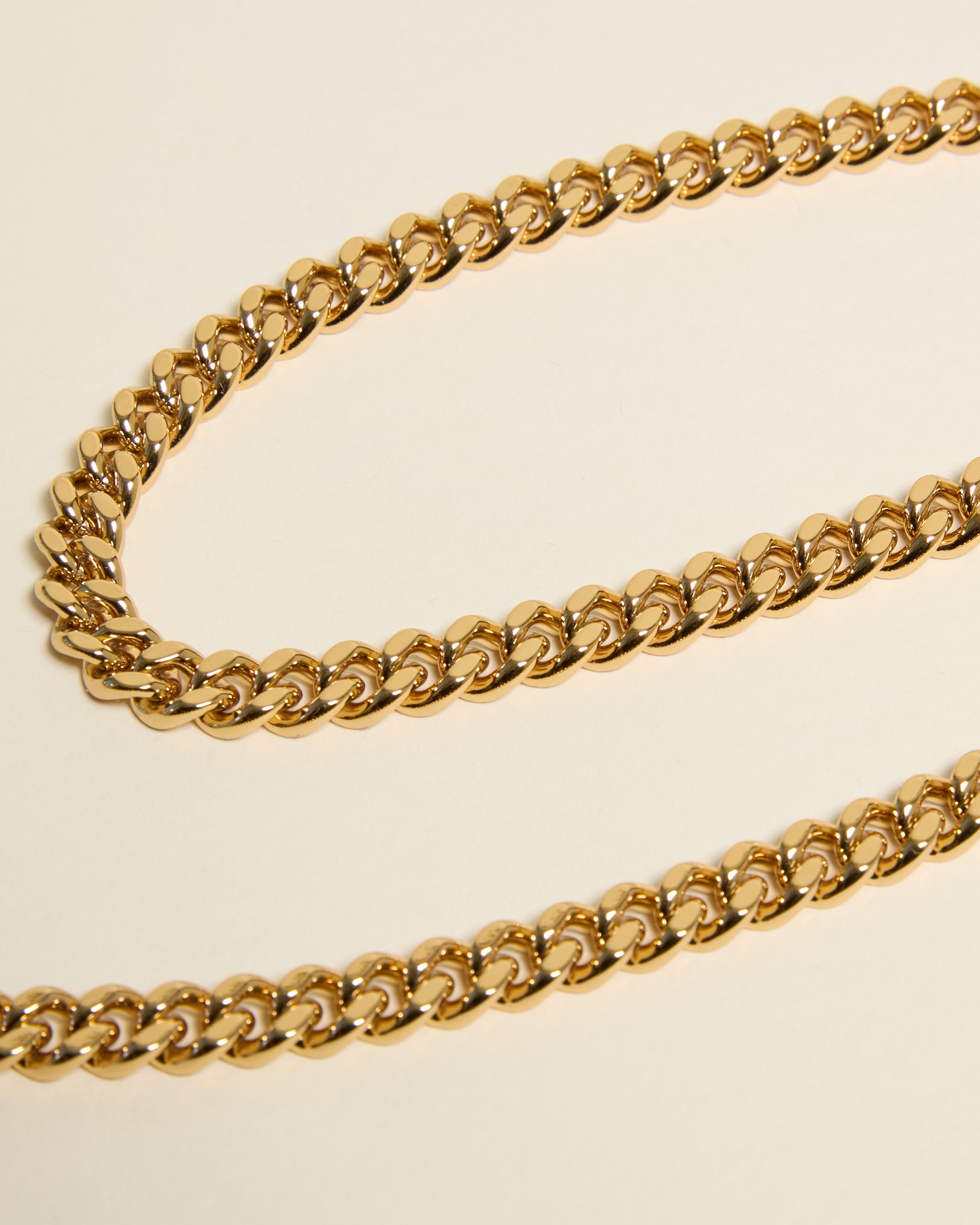
Gourmette chain
It’s impossible to talk about the Lorette bag without mentioning its signature piece: the gold-plated brass curb (gourmette) chain, as chic as it is sparkling. Since the 1950s, it has embodied timeless French elegance that transcends eras without ever going out of style. Originally offered in two fixed lengths (handheld or shoulder, you had to choose!), it has now been cleverly reinvented with a sliding system threading through four eyelets. The result? A chameleon chain that adapts to your needs: carried by hand or on the shoulder for a sophisticated look, worn crossbody for hands-free city strolls, or tucked under the arm like a clutch for impromptu cocktails.

Volutes
Since its beginnings, Paris has been the muse of Germaine Guérin. In the 1940s, the first Volutes were born, directly inspired by the wrought iron ornaments that adorn the balconies and railings of Haussmannian buildings. Spirals, curves, counter-spirals, and arabesques dance across the façades of the City of Light, true signatures of an architecture designed down to the finest detail. It was by observing one of these treasures, the gate at 243, rue Saint-Honoré, now lost, that the House found the inspiration for its emblematic motif. These Volutes, which became a symbol, were soon transformed into gold-plated brass jewelry that would adorn bags and clutches: elegant lines drawn with a free, almost calligraphic gesture.
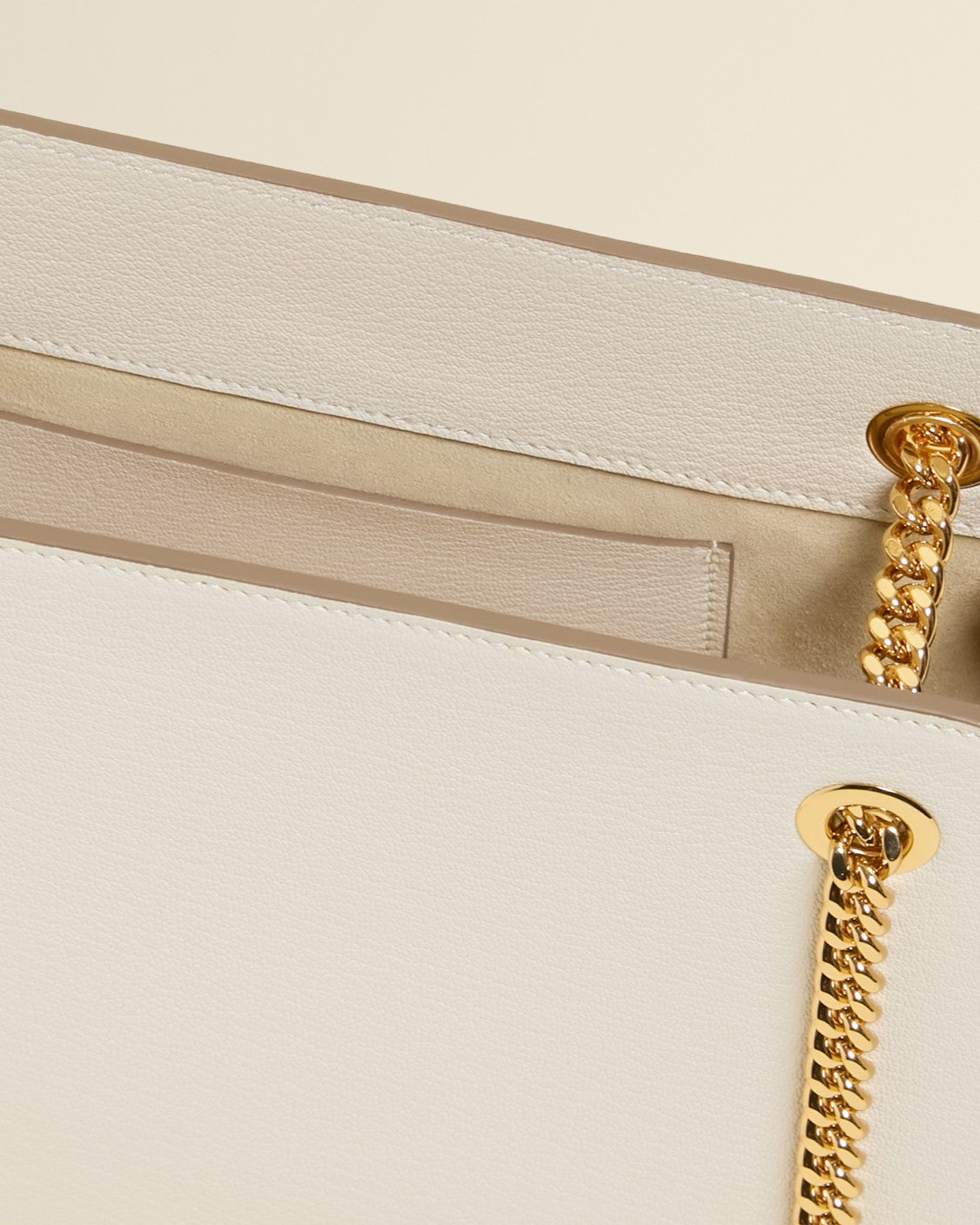
The Poudrier pocket
A nod to the 1950s, the interior of the Lorette bag retains the functional spirit of Germaine Guérin’s creations, originally designed to accompany women in their daily lives. At the time, each pocket had its role: a powder compact on one side, a lipstick on the other. Today, the powder compact has given way to a cardholder, but the spirit remains the same: everything has its place, and always with flair.
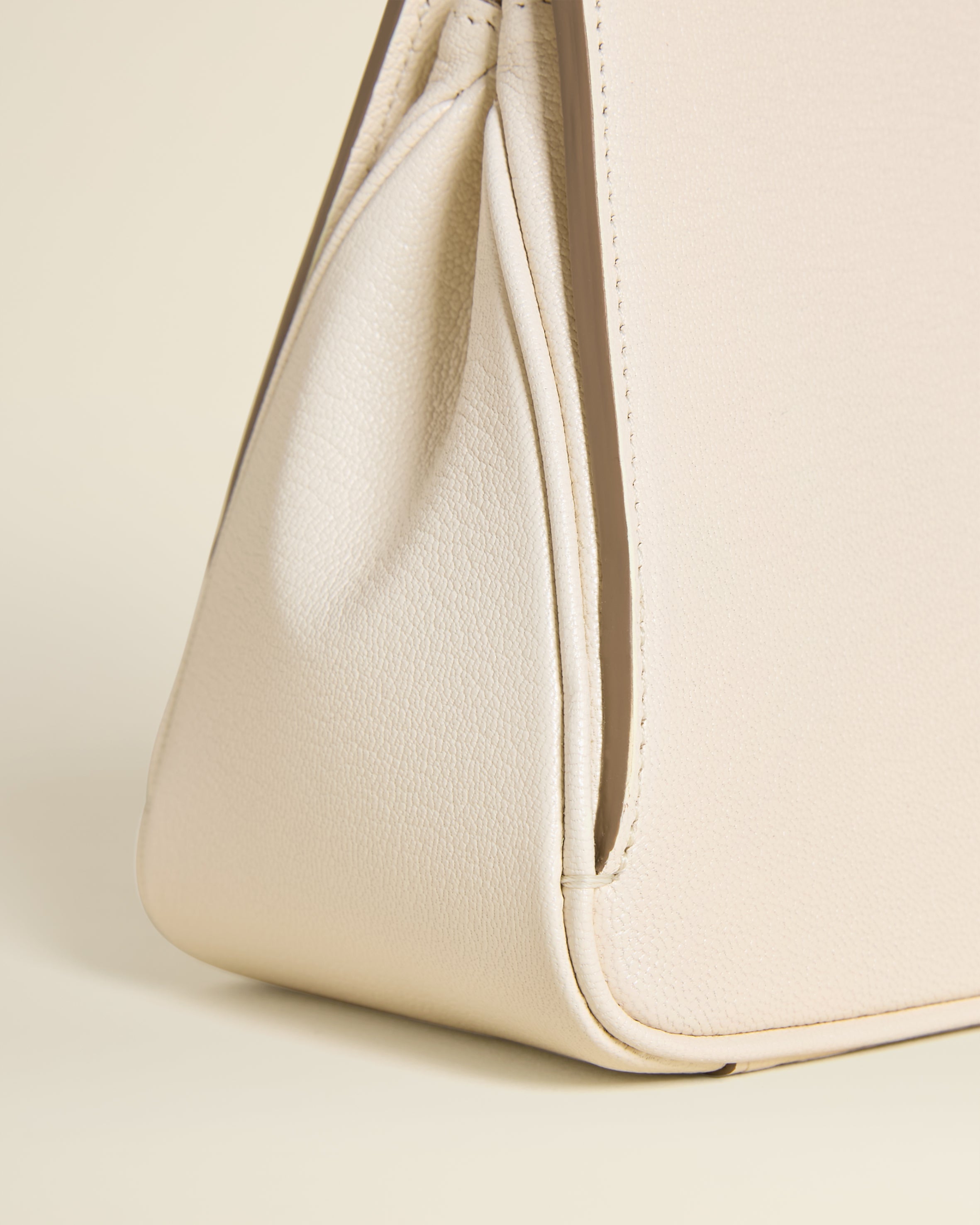
Bridle stitches
Bridle stitches are a bit like Germaine Guérin’s signature: precise, confident, and full of character. True symbols of the Maison’s craftsmanship, these hand-sewn stitches aren’t there just for decoration. They strengthen the bag’s structure, making it more durable… and infinitely more charismatic.
